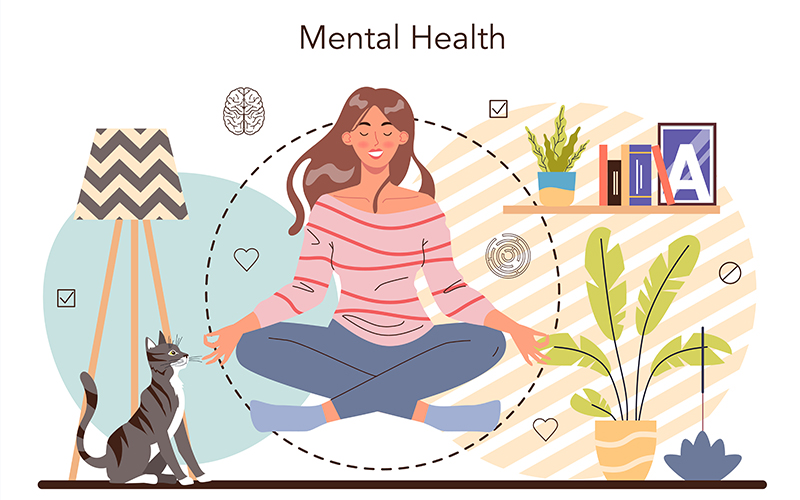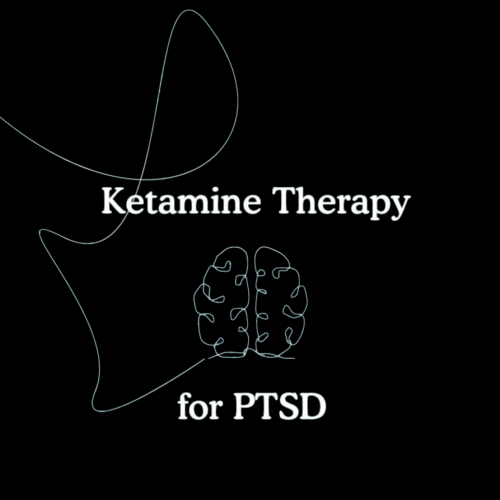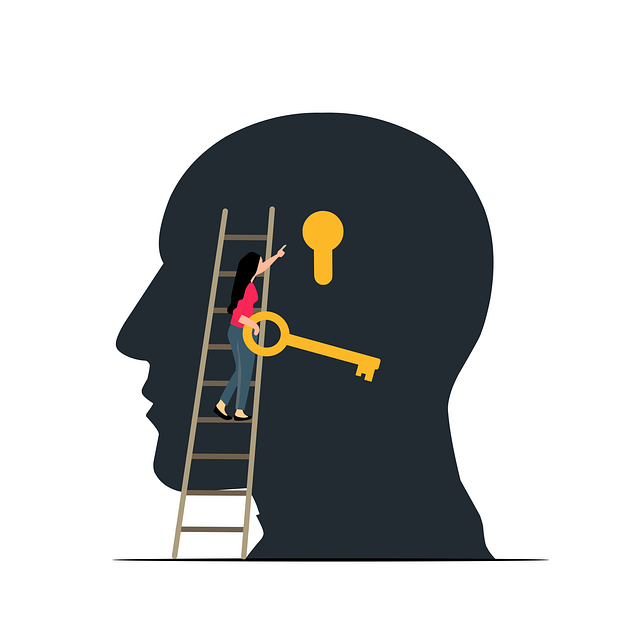Introduction:
Mindfulness-Based Cognitive Therapy (MBCT) is a structured, evidence-based psychotherapeutic approach that combines principles of cognitive behavioral therapy (CBT) with mindfulness practices. Developed in the 1990s by Zindel Segal, Mark Williams, and John Teasdale, MBCT was initially designed to help prevent relapse in individuals with recurrent depression. Over time, its applications have expanded to include anxiety disorders, chronic stress, and other mental health challenges.

The central premise of MBCT is that by cultivating present-moment awareness and adopting a non-judgmental attitude toward thoughts and emotions, individuals can break the automatic patterns of negative thinking that contribute to emotional distress. Unlike traditional CBT, which focuses primarily on cognitive restructuring, MBCT emphasizes observing thoughts without attachment or judgment, fostering emotional resilience and self-regulation.
MBCT has become widely recognized for its effectiveness, being recommended by clinical guidelines in the UK, US, and other countries for relapse prevention in depression, as well as the treatment of anxiety and stress-related conditions. Its integration of mindfulness practices offers a holistic approach to mental health, combining cognitive strategies with self-awareness and experiential learning.
What Is MBCT Therapy Used For?
Mindfulness-Based Cognitive Therapy is applied in a variety of clinical and non-clinical contexts. Its primary uses include:
1. Preventing Depression Relapse
Recurrent depression is one of the most common mental health challenges worldwide. MBCT is particularly effective in reducing relapse rates by helping individuals recognize early warning signs of depressive thinking and respond with mindful awareness rather than automatic negative thought patterns.
2. Managing Anxiety Disorders
Research shows MBCT can reduce symptoms of generalized anxiety disorder (GAD), social anxiety, and panic disorder. By cultivating mindfulness, patients learn to observe anxious thoughts without judgment, which reduces rumination and anticipatory worry.
3. Stress Reduction
MBCT’s mindfulness components help individuals cope with chronic stress by promoting emotional regulation and physiological relaxation. Mindful awareness of bodily sensations, thoughts, and emotions allows for more adaptive responses to stressful situations.
4. Chronic Pain and Physical Health Conditions
MBCT has been adapted to help patients with chronic pain, fatigue, and certain medical conditions. Mindfulness exercises improve pain tolerance, reduce distress, and enhance overall quality of life.
5. Enhancing Emotional Awareness and Self-Compassion
Beyond clinical applications, MBCT is increasingly used in general wellness contexts to promote emotional resilience, reduce negative self-talk, and cultivate self-compassion.
The therapy’s versatility lies in its combination of structured cognitive exercises with mindfulness training, which together improve both psychological and physiological well-being.
What Is the MBCT Program for Mindfulness?
The MBCT program is typically an 8-week structured course, although adaptations exist for different populations and settings. The program combines group sessions, guided exercises, homework, and psychoeducation, offering participants a comprehensive framework for practicing mindfulness in daily life.
1. Structure of the MBCT Program
A standard MBCT program involves:
- Weekly Group Sessions: 2–2.5 hours per session with a trained facilitator.
- Guided Mindfulness Practices: Exercises include body scans, mindful breathing, mindful movement, and sitting meditations.
- Psychoeducation: Participants learn about the nature of thoughts, emotions, and the cognitive patterns that contribute to distress.
- Homework Assignments: Daily mindfulness exercises and reflective journaling support skill integration between sessions.
2. Key Components of MBCT
- Body Scan Meditation: Participants focus attention sequentially on different parts of the body, noticing sensations without judgment. This practice fosters somatic awareness and anchors attention in the present moment.
- Mindful Breathing: Attention is directed toward the breath, serving as a tool to observe and disengage from anxious or depressive thoughts.
- Mindful Movement: Gentle yoga or stretching exercises promote awareness of bodily sensations and enhance mind-body connection.
- Thought Observation Exercises: Individuals learn to recognize negative or automatic thoughts without reacting or engaging, reducing rumination and emotional reactivity.
- Integration Into Daily Life: Participants practice mindful awareness in routine activities, such as eating, walking, or interacting with others, enhancing real-world applicability.
3. Delivery Formats
- Group-Based Programs: The most common delivery method, fostering peer support and shared learning.
- Individual MBCT: Customized for patients requiring one-on-one attention.
- Online or App-Based Programs: Digital adaptations make MBCT more accessible while maintaining core principles.
4. Expected Outcomes
Participants typically experience:
- Reduced depressive relapse
- Decreased anxiety and worry
- Enhanced emotional regulation
- Improved mindfulness and self-compassion
- Greater resilience to stress
The structured nature of MBCT, combined with home practice, allows participants to internalize mindfulness skills for long-term emotional health.
What’s the Difference Between CBT and MBCT?
While MBCT is derived from Cognitive Behavioral Therapy (CBT), there are fundamental differences in focus, methodology, and philosophy.
1. Cognitive Focus
- CBT: Emphasizes cognitive restructuring, challenging distorted thoughts and replacing them with rational alternatives. The goal is to change the content of thought.
- MBCT: Encourages non-judgmental awareness of thoughts, observing them as mental events rather than facts. The goal is to change the relationship with thoughts rather than their content.
2. Mindfulness Component
- CBT: Traditionally does not include mindfulness practices, though some CBT adaptations now incorporate elements like relaxation or meditation.
- MBCT: Integrates formal mindfulness practices (body scan, mindful movement, meditation) to enhance present-moment awareness and reduce automatic cognitive patterns.
3. Approach to Relapse Prevention
- CBT: Focuses on modifying thinking patterns to prevent symptom recurrence.
- MBCT: Focuses on meta-cognitive awareness, helping individuals recognize early signs of relapse and respond with mindful detachment rather than reactive behaviors.
4. Therapeutic Goals
- CBT: Symptom reduction and problem-solving.
- MBCT: Symptom reduction plus long-term skills development, emotional regulation, and cultivating mindfulness for overall mental well-being.
5. Suitability
- MBCT is particularly effective for individuals with recurrent depression or chronic anxiety, while CBT has broader applications across a range of psychological disorders.
In essence, MBCT builds upon the cognitive foundations of CBT while adding experiential mindfulness practices, making it a unique and complementary approach.
Can I Practice MBCT at Home?
Yes, many MBCT principles and exercises can be practiced at home, though guidance from a trained facilitator enhances learning and reduces the risk of misunderstanding the practice. Home practice is essential for skill consolidation and is a core component of MBCT programs.
1. Recommended Home Practices
- Mindful Breathing: Spend 5–10 minutes daily focusing on the breath, observing thoughts without judgment.
- Body Scan Meditation: Practice guided body scans to develop somatic awareness.
- Mindful Walking or Movement: Bring attention to sensations during walking or stretching exercises.
- Thought Observation: Note negative or anxious thoughts in a journal, observing them objectively without engaging.
- Daily Mindfulness Integration: Apply mindfulness to routine activities such as eating, showering, or household chores.
2. Resources for Home Practice
- Guided Meditations: Audio or video recordings from certified MBCT instructors.
- Apps: Platforms offering structured MBCT exercises, such as Headspace, Insight Timer, or Calm.
- Books and Workbooks: Evidence-based MBCT manuals for home learners.
3. Limitations and Considerations
- Home practice should complement, not replace, professional guidance, particularly for individuals with severe depression or anxiety.
- Regular self-discipline and commitment are required; benefits accrue gradually with consistent practice.
- Mindfulness exercises may initially increase awareness of distressing thoughts or emotions; guidance from a therapist can help navigate this safely.
Scientific Evidence and Effectiveness of MBCT
A growing body of research supports MBCT’s efficacy:
- Depression Relapse Prevention: Multiple randomized controlled trials show that MBCT reduces relapse rates in recurrent depression by up to 50% compared to usual care.
- Anxiety Disorders: Studies indicate reductions in generalized anxiety symptoms, worry, and stress following MBCT participation.
- Physiological Benefits: MBCT has been associated with lower cortisol levels, improved immune function, and enhanced emotional regulation.
- Chronic Pain Management: MBCT improves pain coping and reduces psychological distress associated with chronic conditions.
The therapy is generally safe, with minimal adverse effects, and its structured format allows for measurable progress and skill development.
Tips for Maximizing MBCT Benefits
To achieve the greatest benefit from MBCT, consider these strategies:
- Consistency: Engage in daily mindfulness exercises, even for short durations.
- Integration: Apply mindfulness to everyday activities beyond formal meditation.
- Reflection: Maintain a journal to observe patterns in thoughts, emotions, and reactions.
- Guidance: Attend group sessions or seek online facilitation to enhance learning.
- Patience: Mindfulness skills develop gradually; avoid expecting immediate transformation.
- Combination: MBCT can be combined with CBT, medication, or lifestyle interventions for enhanced outcomes.
Conclusion: The Role of MBCT in Mental Health
Mindfulness-Based Cognitive Therapy represents a revolutionary integration of cognitive and mindfulness practices, offering a structured, evidence-based approach to emotional well-being. It is particularly effective for preventing depression relapse, managing anxiety, and reducing chronic stress, while also cultivating long-term mindfulness skills and self-compassion.
By emphasizing awareness without judgment, MBCT empowers individuals to disengage from habitual negative thought patterns, respond adaptively to emotional distress, and enhance overall resilience. Whether practiced in a professional program or integrated thoughtfully at home, MBCT equips individuals with lifelong skills to navigate the challenges of modern life with greater clarity, calm, and emotional stability.



